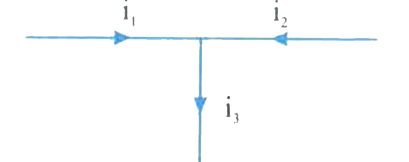Two simple harmonic motions are given by x1=asinωt+acosωtandx2=asinωt+a√3cosωt
The ratio of the amplitudes of first and second motion and the phase difference between them are respectively
A
√32andπ12
B
√32andπ12
C
2√3andπ12
D
√32andπ6
Video Solution
Text Solution
The correct Answer is:A
x1=asinωt+acosωt
A1=√a2+a2=a√2,ϕ1=tan−1(aa)=π4
x2=asinωt+a√3cosωt
A2=
⎷a2+(a√3)2=2a√3,ϕ2=tan−1(1√3)=π6
A1A2=a√22a/√3=√3√2 , Δϕ=π4−π6=π12.
|
Topper's Solved these Questions
- SIMPLE HARMONIC MOTIONBOOK - ERRORLESSCHAPTER - SIMPLE HARMONIC MOTIONEXERCISE - NCERT BASED QUESTIONS (Velocity of Simple Harmonic Motion)
11 Videos
- SIMPLE HARMONIC MOTIONBOOK - ERRORLESSCHAPTER - SIMPLE HARMONIC MOTIONEXERCISE - NCERT BASED QUESTIONS (Acceleration of Simple Harmonic Motion)
11 Videos
- ROTATIONAL MOTIONBOOK - ERRORLESSCHAPTER - ROTATIONAL MOTIONEXERCISE - Assertion & Reason
25 Videos
- SURFACE TENSIONBOOK - ERRORLESSCHAPTER - SURFACE TENSIONEXERCISE - ASSERTION & REASON
11 Videos
Similar Questions
Knowledge Check
Two simple harmonic motions are given by x1=asinωt+acosωt and x2=asinωt+a√3 01. The ratio of the amplitudes of first and second motion and the phase difference between them are respectively
A√32 and π12B√32 and π12C2√3 and π12D√32 and π6Two simple harmonic motions given by, x=asin(ωt+δ) and y=asin(ωt+δ+π2) act on a particle will be
Acircular anti-clockwiseBcircular clockwiseCelliptical anti-clockwiseDelliptical clockwiseThe epoch of a simple harmonic motion represented by x=√3sinωt+cosωtmis
A30∘B40.3∘C60∘D25∘
x1=3sinωt
x2=5sin(ωt+53∘)
x3=−10cosωt
Find amplitude of resultant SHM.
View SolutionTwo simple harmonic motions are represented as y1=10sinω and y2=5sinwt+5cosωt
The ration of the amplitudes of y1 and y2 is
View SolutionTwo simple harmonic motions are represented by y1=10sinωt and y2=15cosωt. The phase difference between them is
View SolutionEquations y=2Acos2ωtandy=A(sinωt+√3cosωt) represent the motion of two particles.
View SolutionThe ratio of amplitudes of following SHM is x1=Asinωtandx2=Asinωt+Acosωt
View Solution

